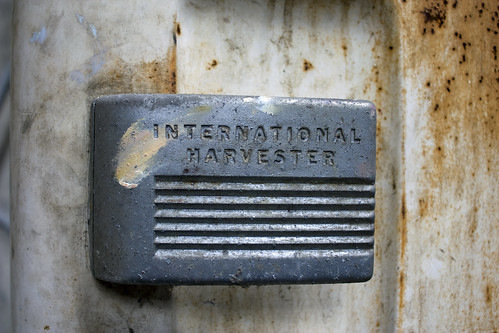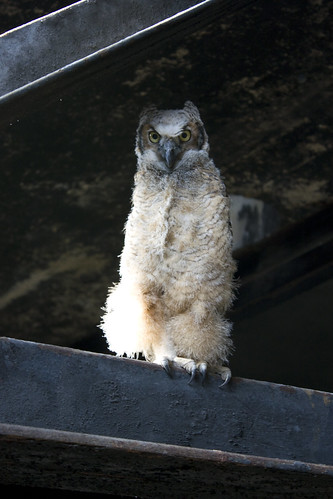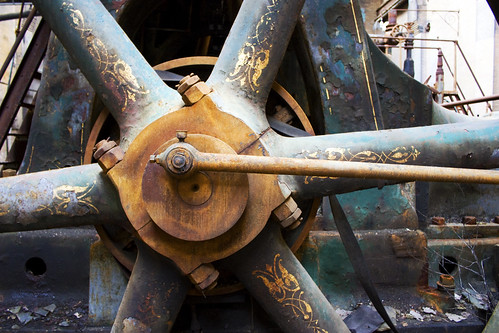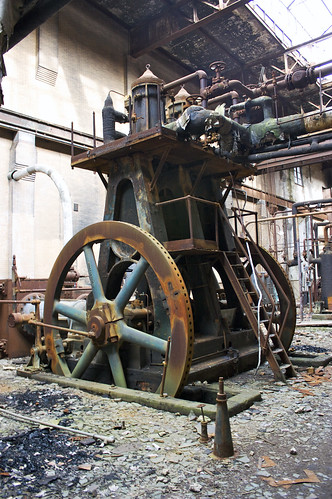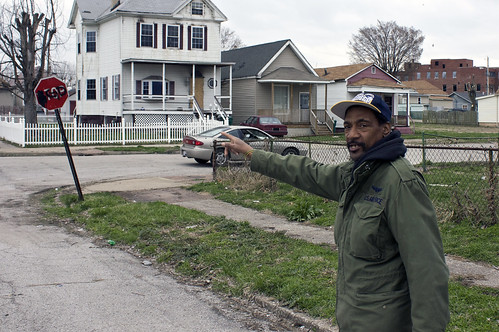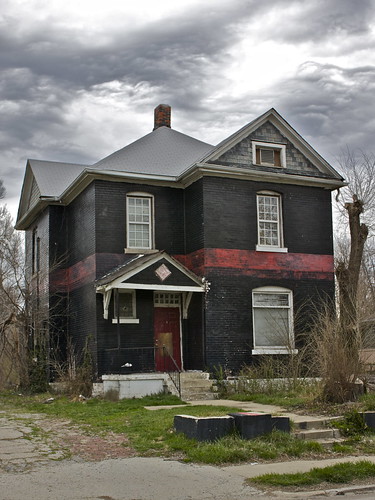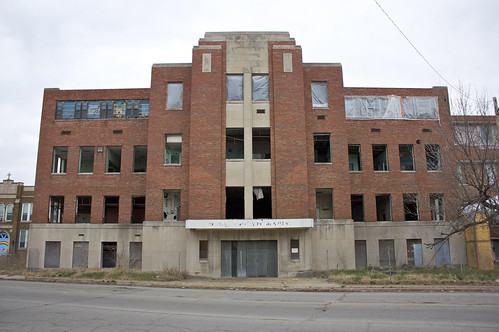Downtown St. Louis, Missouri and the Gateway Arch are easily visible from the roof. I believe we were spotted on the roof by a passer-by in a stopped pickup truck. Drew and I decided to get out of there ASAP.
Tag Archives: east
International Harvester
Platform
This platform is perhaps 20 feet above the slaughtering floor. I dared not to venture out onto the aged wooden platform. The stairwell climb up was incredibly steep.
Armour transported the live animals to be slaughtered to the very top of the factory. The animals were immediately slaughtered, divided up, and sent through an elaborate network of transportation tubes throughout the plant. Various rooms throughout the plant appear to have a specific purpose, but are all connected via tubes, elevators, or cranes. This would also explain why the large refrigeration generators are at the base of the factory next to where the rail lines are.
Who Are You?
Drew and I made our way to the top of a rickety steel stairwell platform in the Armour plant. He then told me to turn around slowly. When I did, we were face to face with a wild owl. Drew calmly descended the stairs while I remained frozen in place.
My heart was racing as I slowly adjusted my camera to take this photo. This is what urbex is all about. There is always an inherent danger, but there is also the thrill of never knowing what you will discover. This owl was absolutely magnificent. I feel as though this photo does not do justice to its scale though. It was quite a large bird.
The Bygone Industrial Era
Refrigeration Generator
Armour Meat Processing Plant
Just to the north of East St. Louis in National City is a very large abandoned meat processing plant. Armour and Company are perhaps best known for developing Dial soap, but they were primarily a slaughterhouse company. This meat processing plant was built in 1928 and ceased operations in 1959.
The Armour and Dial brands continue to exist, though these properties are now held by new owners.
Research Links:
Ecology of Absence – Hog Capital of the Nation
Arial view of the Armour Meat Packing Plant
Historical timeline of Armour and Company
Reggie
Drew and I spoke with Reggie for a good while about the neighborhood. He has been an East St. Louis resident for 48 years and has military experience.
We got the impression that he knew everyone in the neighborhood. Passers by took their time to wave or say hello to him. He was all for us photographing the neighborhood.
Reggie also hit us with an astounding statistic: There have been 15 fires in East St. Louis in the last 10 days. (Notice the burned out home behind him.)

